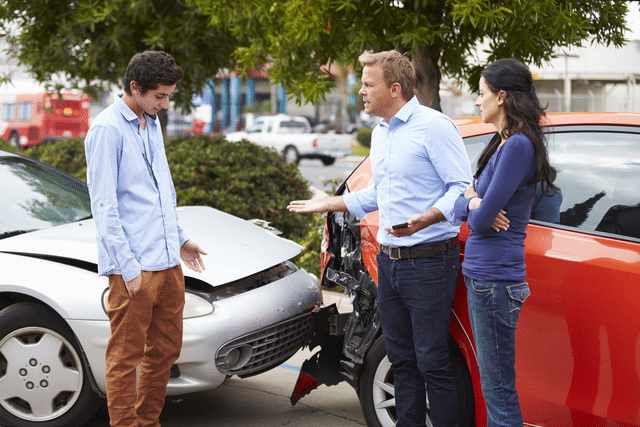How to Prove Negligence in a Car Accident

A big question in an auto accident is often how to prove negligence. A car accident involving more than one driver usually means there was negligence. The concept of proving negligence is important to determine who is at fault. If you are the plaintiff in your case, this proof can be the difference in who pays for your medical bills and accident costs. This is true in both personal injury claims and other police reports, even claims from the Insurance company, involving car accidents.
When on the road, the person driving has the duty to comfort to traffic laws and regulations, to comfort to a particular conduct. This is to protect himself and others (property or persons) from unreasonable risks of harm and damage. The person must exercise reasonable care when driving. As to what constitutes the fault for the accident and reasonable care depends on the surrounding circumstances—the time, persons, place, etc. Of course, when one is inattentive while driving or if one does not follow traffic rules (running a red light, speeding, driving the wrong way, drunk driving), then the duty to exercise reasonable care is not complied with. Hence, the person is deemed negligent and therefore, liable for any injury or damage caused.
Negligence in Car Accidents
Negligence is the failure of a person to exercise reasonable care. This needs to be determined to establish fault.
Generally, negligent driving includes the following:
- Not Being Vigilant. A person who takes his eyes off the road or who is attentive while driving is deemed negligent. The driver was negligent in their duty to be extremely alert, focused, and attentive when behind the wheel. He is required to do that for his own and other people’s safety.
- Disobedience to Traffic Rules. Traffic rules must be strictly adhered to. They are imposed for the safety of the persons and property on and along the road. They minimize inconvenience, promote orderliness, and prevent road mishaps and accidents. If a person breaks any traffic rules, then they are presumed to be negligent and, thus, are responsible for any accident that may occur due to their negligence.
Failure to Use Vehicle Features When Necessary
Vehicles have features and equipment intended for particular use. This is why it is important that one maintains the condition of his vehicle. Misuse or underuse of such features could lead to accident or injury. If such happens, the person will be deemed negligent and at fault.
How to Prove Negligence
If you claim negligence, you must establish and prove the following elements: (1) duty requiring the other person to conform to a certain standard of care; (2) a breach by the person to such standard of care; (3) a causal connection between the person’s conduct and the resulting injury; and (4) actual damages.
To establish that the defendant was negligent and at fault, and to hold the defendant liable for the injury or damage suffered due to the car accident, you must prove the following legal elements:
1. Duty of Care
Driving laws require all drivers to exercise reasonable care. The drivers owe other drivers the duty to drive safely. This includes obeying all the traffic norms. This exists in all cases because the law requires every driver to exercise such duty.
2. Breach of the Duty
Since the drivers are required to exercise reasonable care, in order to prove negligence, there must breach of such duty. The plaintiff must prove that the defendant was negligent and did not drive safely, such as when the defendant breached the traffic laws.
3. Causation
There must be a relation between the defendant’s negligence or breach of duty and the accident or injury. Cause and effect must be established. The plaintiff must prove that it is indeed the defendant’s negligence that led to or caused the injury or damage.
Damages
The plaintiff must actually suffer damage or injury due to the defendant’s negligence. He must be able to provide a particular amount to determine how much he can claim from the defendant for the losses and costs he incurred due to the accident. If he cannot provide an amount, the court may reduce the damages which he can claim from the defendant.
The person who suffers injury or damage due to a car accident is entitled to receive compensation and damages from the driver who is at fault or negligent. This is why it is important to prove negligence in a car accident. When you get involved in a car accident, seek help from the Car Accident attorneys to prove negligence and get your claim. At Brad Johnson Injury Law, our Injury lawyers can get you the most of your benefits from the insurance company and prove your negligence.
